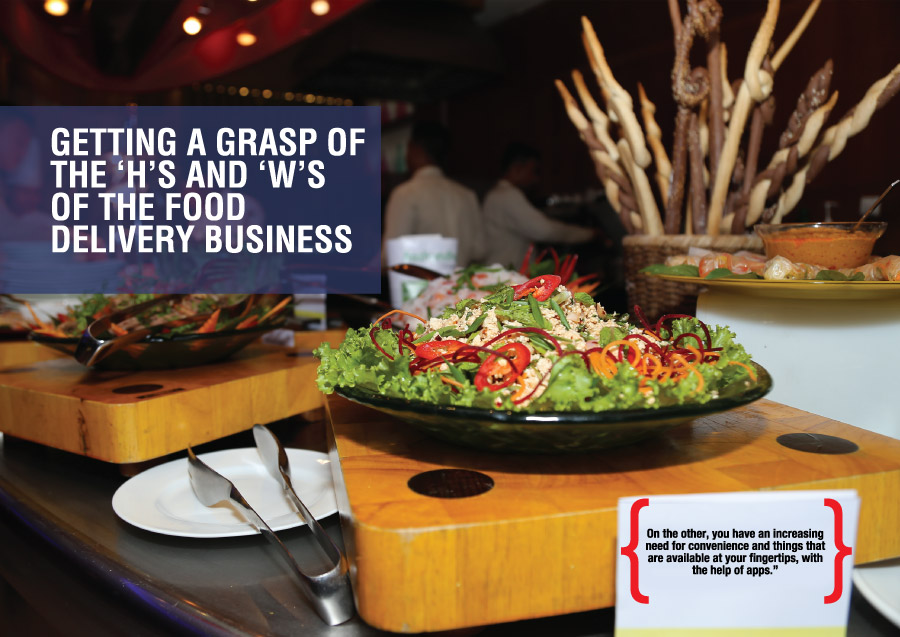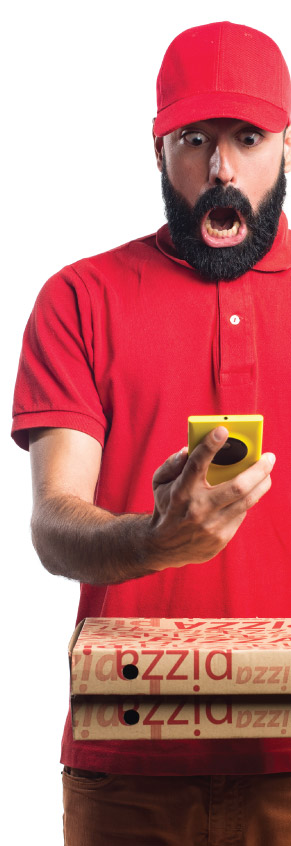 With more families supported by working parents and younger, single people favoring convenience above all else, cooking after “long day” isn’t exactly the option urbanites prefer these days.
With more families supported by working parents and younger, single people favoring convenience above all else, cooking after “long day” isn’t exactly the option urbanites prefer these days.
Banking on that, two things have happened: restaurants have mushroomed and food delivery services—an age old system but re-packaged with a crunch of tech—have thrived.
These delivery companies are working to offer consumers meals in a context that provides more choice, improved quality, a high level of transparency, and, above all else, convenience.
HOW DID IT PICK UP?
Food delivery companies that effectively act as middlemen between the restaurant and the consumer, fueled by a smartphone app or web page, are growing in major cities around the world.
Grubhub, founded in 2004 by two web developers looking for an alternative to paper take-out menus, was the first example of this now global trend. Although there was nothing new about getting food delivered to your doorstep – pizza companies and grocery stores had already been doing it, especially in the Western hemisphere.
But what Grubhub did in 2004, that it started to deliver food from restaurants that did not operate delivery services themselves, thereby truly offering something to consumers that they couldn’t get before: freshly prepared food from their favorite restaurants, enjoyed at home.
For many Netflix- and sofa-loving consumers, this was the very definition of “having it all.”
Julian Dames, Chief Marketing Officer and co-founder of Foodora, one of the largest food delivery services owned by Berlin based Delivery Hero, which owns Bangladesh’s Foodpanda says that he feels the rising global demand for high-end food delivery is the result of the combined success of two other recent movements.
“On the one hand, you have an increasing appreciation for food, a demand for higher food quality and a rise in ‘conscious eating,’” he points out. “And on the other, you have an increasing need for convenience and things that are available at your fingertips, with the help of apps.”
HOW IT WORKS?
The business model that these food delivery services are founded on – proposing delivery services to restaurants that do not deliver themselves – provides a way for restaurants to increase their revenue without touching their profits.
So that means when a customer places an order through the delivery service, the restaurant’s operating expenses are not applicable. Usually a price is divided into thirds: one third food cost, one third operating expenses, and one third profit.
“We take one third of the value of each order, which is normally used to pay the operating expenses.”
Usually the food delivery companies employ administrative staffs and delivery staffs. Most companies employees are a mix of both freelance and full-time staff, which allows the company to respond to demand as it evolves.
 Foodora, which has over 7,000 restaurant partners globally across 10 countries employ both permanent employees and freelancers as delivery people. Food from local restaurants is ordered via the Foodora app and delivered by bike or moped or car, depending on city and neighborhood.
Foodora, which has over 7,000 restaurant partners globally across 10 countries employ both permanent employees and freelancers as delivery people. Food from local restaurants is ordered via the Foodora app and delivered by bike or moped or car, depending on city and neighborhood.
None of the food delivery companies in the world has shared its exact commission structure publicly. Most of the delivery companies usually take a commission per order [arranged under bilateral agreement with the restaurants,] paid 100 percent by the restaurant and a delivery fee, paid 100 percent by the client.
Deliveroo, the company that is currently dominating the U.K. market, also defines its delivery riders as “independent contractors” and has experimented with both a fixed hourly rate for its riders and a per-delivery pay model.
When demand is high, both models can be successful, but when delivery riders do not receive jobs over a stretch of a few hours while being paid an hourly rate, profitability can dive quickly . This is where UberEATS, one of the industry’s newest yet biggest players may come out on top. Its business model effectively “piggybacks” off already working Uber drivers. When they don’t have a ride, they can deliver food, helping to eliminate the expensive “down time” that plagues other food delivery companies paying hourly wages.
WHAT MATTERS IN THE BUSINESS?
On customer side, the quality of their experience depends mainly on the delivery time promise. The faster the delivery, the fresher the food; so the challenge is to keep “bag time”— the amount of time the food is actually in the delivery bag—as low as possible.
While convincing consumers to order fresh, high-end delivery food online does not seem to be a challenge in today’s smartphone-driven economy, convincing traditional restaurants to allow their food to be delivered by a third party is a different story.
Marc Aeschlimann, CEO of Swiss food delivery service Smood pointed out that the kind of contract that it offers its restaurant partners makes them want to try the service. Add to that the fact that Smood covers the cost of the photography, which Aeschlimann says is a major success factor of restaurants on the site.
“We work together and our collective interest is to earn money. It’s a partnership and it’s totally free for [the restaurants].” he says. “As long as both parties are happy, we continue to work together.
The restaurants are free to end the contract at any time, which is very important to build trust with our partners, as they know that they will not be trapped by a contract.”
WHAT SETS THE BUSINESS APART?
In a growing industry with so much competition, what may eventually set these companies apart has nothing to do with food, surprisingly.
It’s all about technology. Both Deliveroo and Foodora claim that their algorithms will allow them to get ahead in what the industry calls UTRs: rider utilization, or absence of the rider “down time” mentioned above.
In an August 2016 interview with TechCrunch, Deliveroo’s UK Managing Director, Dan Warne, said, “The opportunity for [drivers] to earn more money is going to come from Deliveroo’s ability to develop stronger algorithms and better technology so that they can do more in shorter periods of time.”
“There’s a massive, enormous opportunity for us to do that.” Likewise, Dames says, “Foodora’s algorithms and technology are very smart, very advanced. It’s safe to assume that we currently have the strongest UTRs in the market,” he said. ■








